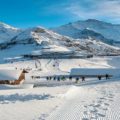Winter in Sikkim 2025: Snow, Monasteries & Travel Guide
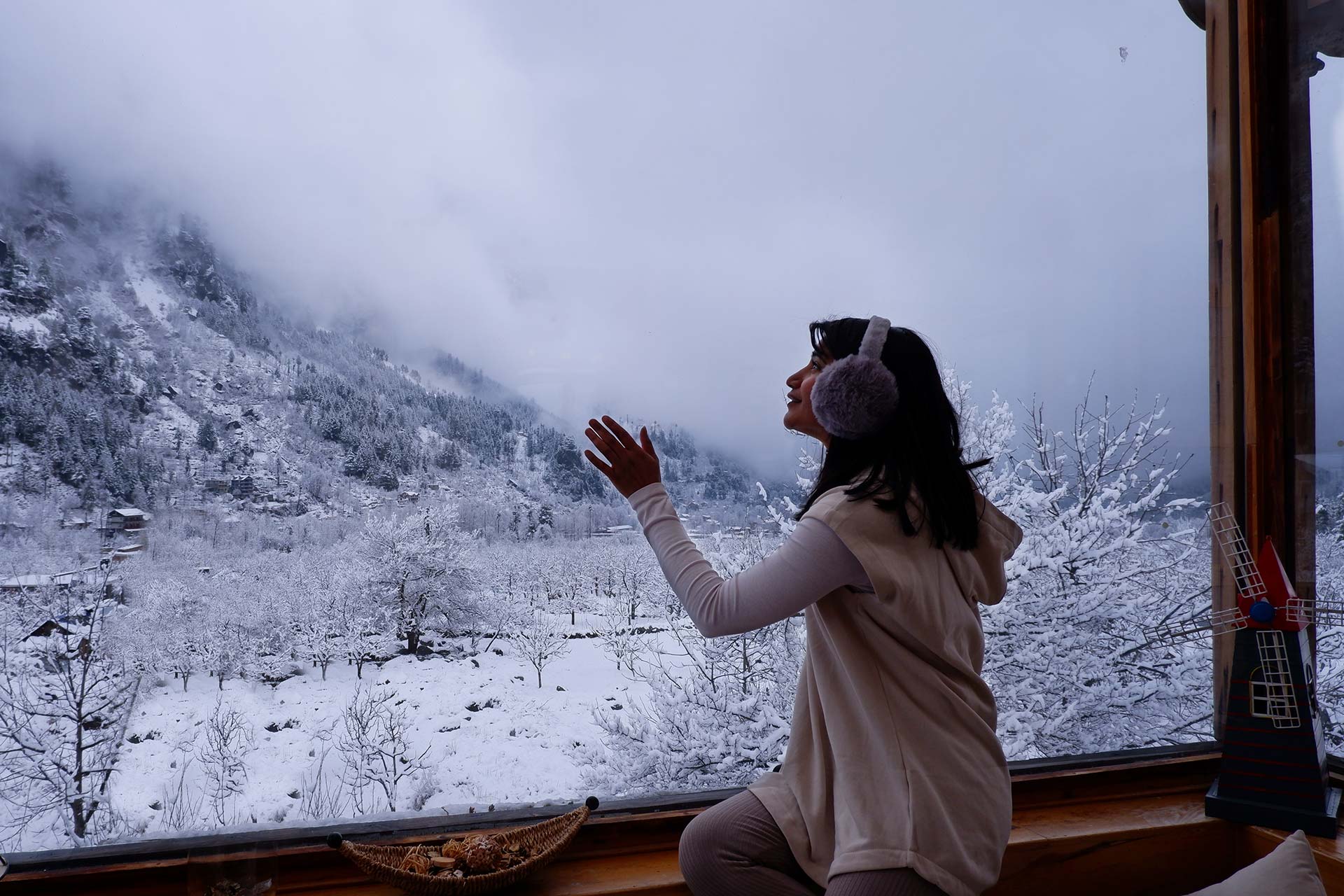
Winter is one of the most fascinating times to understand what places to visit in Sikkim truly feel like beyond postcards. As temperatures dip and the hills turn powdery white, Sikkim in January and December presents an atmosphere that is refreshing, calm, and ideal for travellers who want something meaningful from their holiday. While many winter destinations focus solely on snow, Sikkim adds its own cultural depth, peaceful monasteries, and unique winter traditions that make the state stand out.
This winter travel guide shares practical, clear information on Gangtok weather in December, how winter impacts travel routes, which monasteries look especially captivating in winter, and little-known local observations travellers will genuinely appreciate. The aim is to give readers information they would not usually find elsewhere, helping them plan a real winter experience that feels authentic, well thought out, and most importantly, worth the journey.
In this Blog
Gangtok Weather in December – What Travellers Should Know
The Gangtok weather in December usually stays between 2°C and 10°C. While these numbers may seem straightforward, what makes December interesting is how the weather behaves depending on altitude and sunlight. Gangtok, due to its tiered structure of upper, middle, and lower town, experiences subtle but noticeable temperature differences as one moves around the city. Upper town areas feel cooler, especially before 10 a.m., while lower town often warms up slightly faster because of longer sunlight hours.
Fog appears occasionally in early mornings, but it typically clears quickly, giving way to crisp visibility, ideal for viewing the Kanchenjunga range from places like Tashi Viewpoint. Locals say winter sunlight in Gangtok is gentler and feels more “dry warm” rather than harsh, which makes walking around MG Marg or visiting monasteries quite comfortable during daytime.
Sikkim in January – Snowy Peaks and a Much Cooler Breeze
Sikkim in January takes the winter experience to its peak. Temperatures in Gangtok dip further, often sitting between -1°C and 7°C. Higher-altitude regions such as Tsomgo Lake, Nathula, and Dzongu feel significantly colder, and it is common to find frozen water surfaces in shaded areas.
January stands out not only because of snow but because of the distinctive winter silence, villages become quieter, and people spend more time indoors, giving travellers a chance to witness Sikkim at its most authentic, daily life rhythm. For photographers, January offers some of the clearest skies of the year, particularly after snowfall, when the air feels fresh and visibility sharpens.
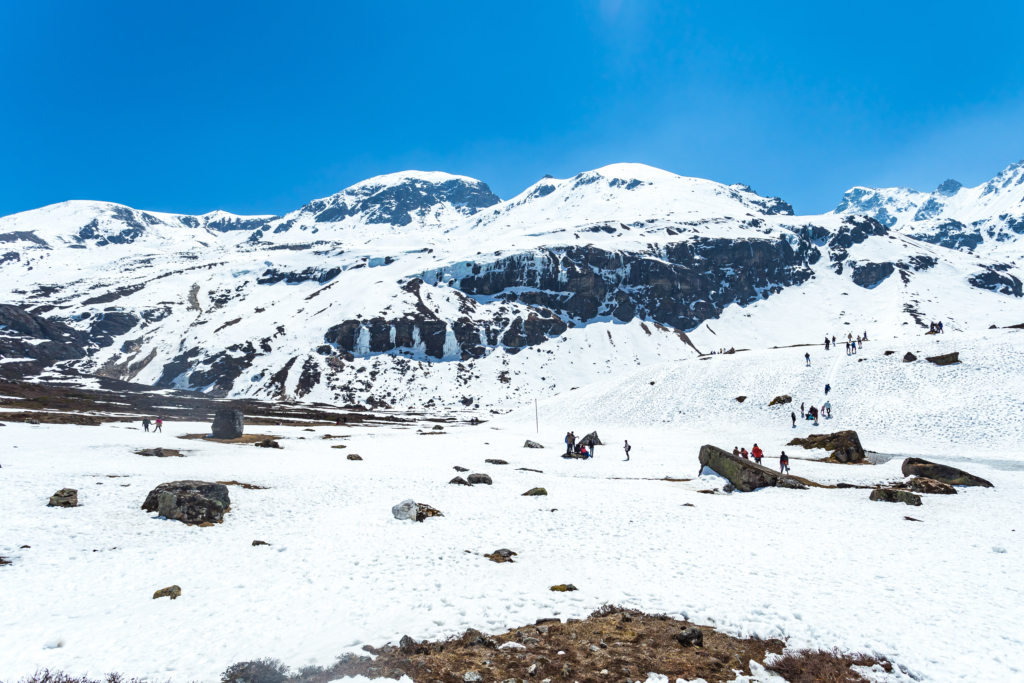
Best Places to Visit in Sikkim: A Winter-Focused Breakdown
Gangtok – Tourist Attractions in Gangtok for Winter
When looking at tourist attractions in Gangtok, winter brings a unique charm to each location. Rumtek Monastery, for example, appears exceptionally striking against the deep blue winter sky. The monastery’s courtyard is quieter in winter, making chanting sessions more audible and impactful for visitors.
The Namgyal Institute of Tibetology, another key attraction, feels different in the winter months because the entire complex receives softer sunlight, giving a warm glow to its artefacts and murals inside. Afternoon visits here are particularly pleasant.
For those who enjoy short walks, the Hanuman Tok viewpoint is more comfortable in December and January, as the cool weather prevents fatigue. On clear days, travellers may catch some of the season’s best views of Kanchenjunga from this spot.
Tsomgo Lake – Tourist Attractions in Tsomgo Lake in Winter
Among the places to visit in Sikkim, Tsomgo Lake is easily one of the most iconic during winter. The lake often partially freezes by late December and early January, creating a rare naturally formed pattern on its icy surface. These patterns vary depending on the degree of cold and sunlight, and locals say no two winters ever create the same formation.
The snow-lined road leading to Tsomgo is also a defining winter experience, but travellers should always check the latest weather in Tsomgo Lake conditions because access depends heavily on temperature and road clearance work.
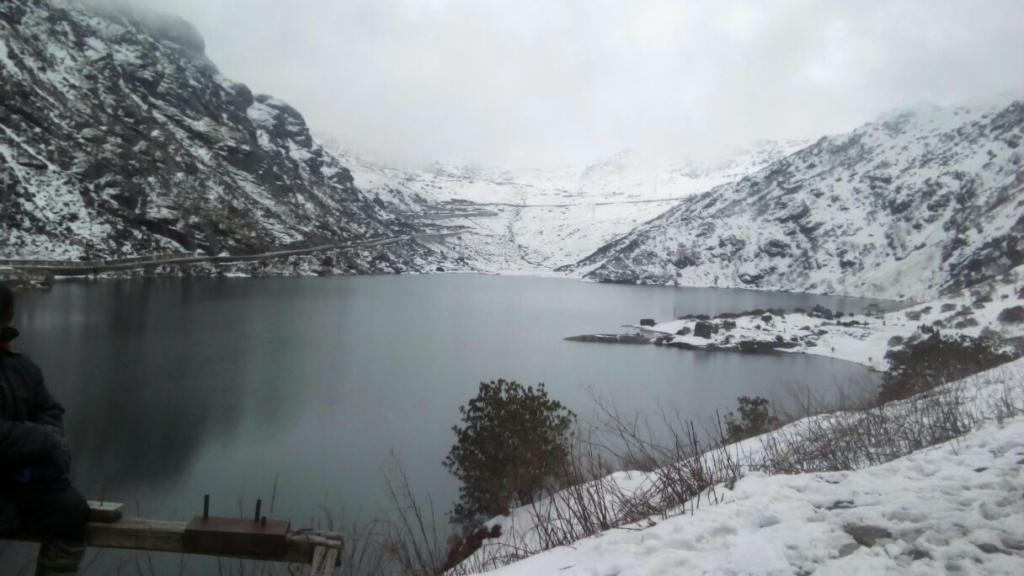
Nathula Pass – Best Time to Visit Nathula for a Snow Experience
The best time to visit Nathula for travellers hoping to experience proper winter snow is between mid-December and late January. While many people visit Nathula for the border viewpoint, winter adds a completely different personality to the place. The snow here tends to be lighter and fluffier due to high-altitude air pressure, which is something visitors often find surprising.
Do note that visits depend on weekly schedules and permits, but winter gives Nathula an atmosphere that feels distinctly peaceful and grounded.
Lachen – Tourist Attractions in Lachen for Winter
Lachen, the gateway to North Sikkim, becomes beautifully cold and crisp during winter. When examining tourist attractions in Lachen, travellers should note that Gurudongmar Lake may sometimes have limited access depending on the weather, but the road journey itself becomes an unforgettable part of the winter experience. Pines along the route gather light snow, giving them a dusted white appearance that makes the entire drive feel unique.
Another interesting aspect of Lachen in winter is the early morning quiet. As the temperature drops below zero, the valley becomes still, and travellers often comment on how easily sound travels across the mountains in these conditions.
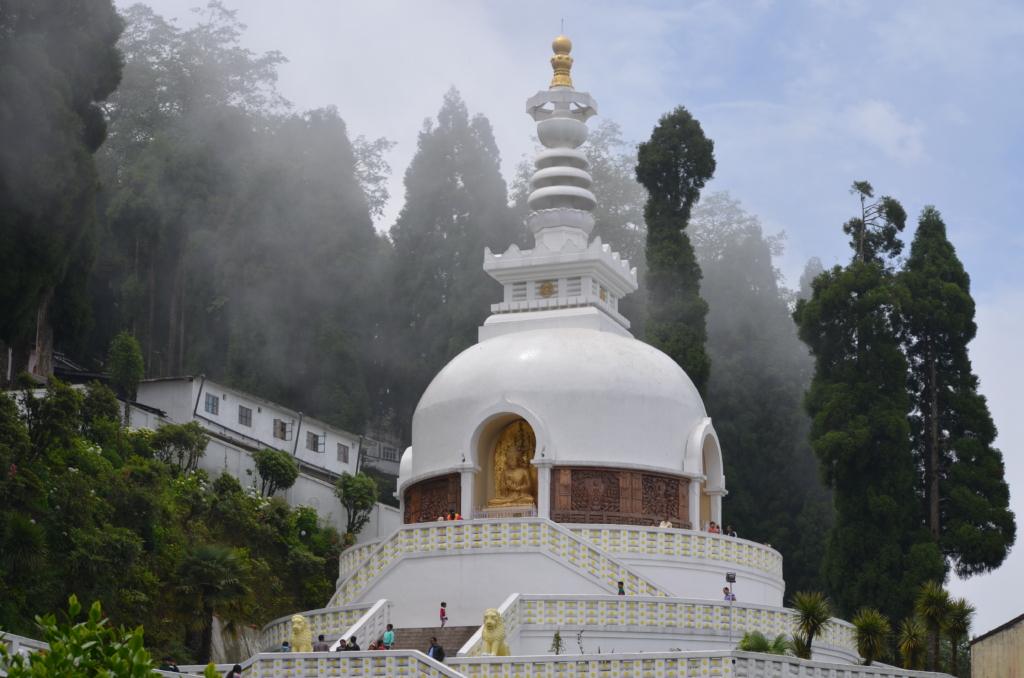
Lachung – Best Time to Visit Lachung for Its Winter Bloom
The best time to visit Lachung for winter visitors is December to mid-January. Lachung sits at a height where winter feels cold but not extreme, and this balance results in a unique natural phenomenon, the early winter bloom of tiny wildflowers along certain slopes that receive just the right amount of sunlight. Most travellers overlook this detail, but locals recognise it as one of the first signs of incoming deep winter.
Yumthang Valley is another highlight near Lachung, and while the valley is known for its spring flowers, winter gives it a different appeal. The wide open fields look clean and white, framed by snow-lined peaks, making it ideal for calm, scenic walks.
Pelling – Tourist Attractions in Pelling for Winter
For winter travellers looking for tourist attractions in Pelling, the skywalk is particularly enjoyable in December and January due to clearer skies and pleasant cool air. The glass skywalk often reflects the white peaks around it, creating an effect that looks especially striking in photographs.
The Pemayangtse Monastery is also a noteworthy winter spot. Morning visits feel peaceful, and the intricate wooden architecture of the monastery absorbs sunlight beautifully during the early hours of the day.
Things to Do in Sikkim in Winter
Things to Do in Gangtok for a Meaningful Winter Trip
Among the many Things to do in Gangtok, winter-specific experiences include:
- Attending morning prayer sessions at Rumtek
- Taking winter photography walks around Tashi Viewpoint
- Trying local winter dishes such as nettle soup and churpee stew
- Visiting the Ropeway in the afternoon when visibility is best
Winter food in Sikkim is another underrated experience. Many small family-run eateries prepare special broths and soups during December and January, making dining a warm and memorable part of the trip.

Things to Do in Sikkim for Travellers Who Love Winters
For travellers planning wider winter experiences:
- Snow walks near Tsomgo Lake
- Hot stone baths in rural villages like Dzongu
- Bird-watching around Phodong and Mangan, which experience seasonal bird activity
- Monastery visits during morning light hours
One interesting winter fact is that rural households in North Sikkim often gather around wood-fired stoves called “bukhari,” and some homestays allow guests to sit around them, making it a culturally rich and comfort-filled moment.
Villas in Sikkim – Winter-Friendly Places to Stay
Villas in Gangtok – Choosing the Right Winter Stay
Several villas in Gangtok are designed to provide comfort during the winter months. Some properties in the upper ridge of Gangtok offer panoramic views of snowy peaks, and many modern villas come with heated rooms or underfloor heating. Before booking, travellers should check the sunlight direction; south-facing villas remain warmer during morning hours.


Villas in Pelling – Winter Mountain View Comfort
Villas in Pelling often focus on giving guests wide views of Kanchenjunga. During winter, these views become incredibly clear, especially around 7 to 9 a.m. Some villas provide traditional heating arrangements alongside modern amenities, creating an ideal mix of comfort and local authenticity.
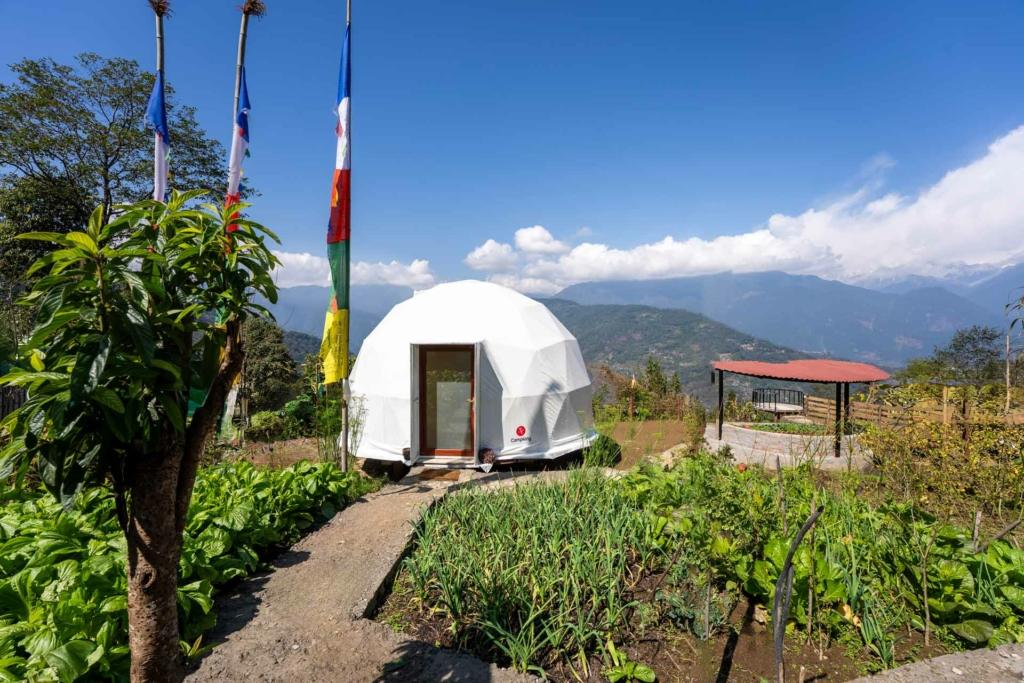

Best Time to Visit Sikkim for a Winter Experience
The best time to visit Sikkim for winter attractions is from late December to early February. This period brings the most reliable snow in higher altitudes, while the main towns remain accessible and easy to enjoy.
Travellers who prefer milder winter conditions may enjoy mid-December the most. For those wanting the coldest temperatures, Sikkim in January is ideal.
Why Winter in Sikkim 2025 Should Be on Your Travel List
Winter in Sikkim is not only about cold weather, it is about seeing the state in its most genuine and undistracted form. With deep cultural experiences, captivating monasteries, unique winter food, and some of the clearest mountain views of the year, places to visit in Sikkim during winter offer something truly meaningful for travellers. Whether someone is planning around Gangtok weather in December, aiming to witness snowfall at Tsomgo or Nathula, or simply wanting to stay in comfortable villas in Sikkim, this winter travel guide gives them everything needed for a thoughtfully planned journey.
Author Credits: Ruben Saha




